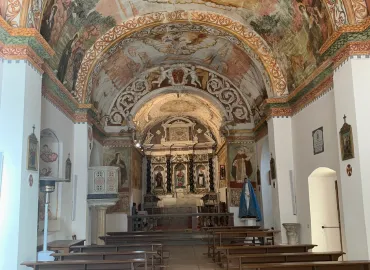Cultural Experiences
Explore the island’s ancient traditions and artistic treasures.
Cultural activities allow you to discover the deep roots of Sardinia, an island rich in millennia-old history, centuries-old traditions, and a still-thriving pastoral culture. Through visits to archaeological sites, local museums, and traditional villages, visitors can immerse themselves in Sardinian culture.
THE STONE TREASURES – ARCHEO TOUR
If you are passionate about archaeology and ancient human civilizations, you cannot miss this tour to discover the most unique and fascinating monuments of our island: the nuraghi and the domus de janas, the famous “fairy houses.” We will take a journey through time spanning over 6000 years, exploring sites of unparalleled charm where the atmosphere of the ancient peoples who once inhabited them can still be felt…
The domus de janas necropolis of Filigosa, which gave its name to the oldest metal culture in Sardinia; the Nuragic area of Tamuli, including a nuraghe, an extensive village, three giants’ tombs, and six betyls (three “male” and three “female”); and the Nuraghe Santa Barbara, one of the most majestic and imposing on the island. Our expert guide will answer all your curiosities, helping you fully understand the millennia-old history of our island. This is an experience to be enjoyed in a group, with family or friends, and is also suitable for children!
The excursion is easy and suitable for everyone. Comfortable clothing is recommended.
- Duration: Half a day
- Recommended period: February/June and September/November
- Reservation is required
Departure from the excursion center in Macomer or Bosa-Marina at 9:00 AM.
The cost of the excursion includes organization, transportation, a tour guide available for the entire tour, guided visits, monument entrance fees, insurance, and a 3D experience.
During the visit to the Tamuli site, you will have the chance to experience a 3D reconstruction of the archaeological site and the rituals once performed in front of the giants’ tombs using virtual reality headsets.
A free gift is included for participants of the archeo-tour!
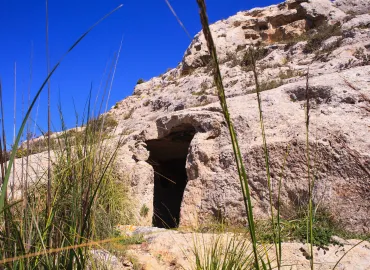
ARCHEO TREKKING
Where nature is legend, and legend is history.
Two masterpieces of antiquity: the Nuraghe Orolo of Bortigali and the Nuraghe Santa Barbara of Macomer, separated by a mountain ridge—Monte Manai—yet united by the grandeur and integrity that still distinguish them among the monuments of Nuragic archaeology.
We will traverse a territory rich in historical, cultural, and environmental testimonies of great communal interest. Your gaze will continuously wander across the Gennargentu mountains, the Abbasanta plain below, and finally the mountains of Villacidro and Montiferru. In spring, it is possible to admire the beautiful blooms of the digitalis purpurea, a fascinating plant known for its pharmacological properties, along with wild orchids. In summer, the fields are covered with helichrysum and its spectacular yellow flowers.
The excursion is easy and suitable for everyone. Comfortable clothing, water, sunscreen, and a hat are recommended.
- Departures: 09:00 AM – 1:00 PM
- The cost of the excursion includes off-road or minibus transport, an environmental hiking guide, and insurance.
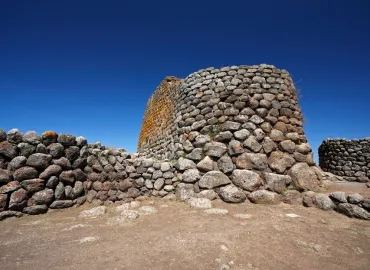
ARCHAEOLOGICAL AREA OF TAMULI
The Tamuli archaeological complex is located at the foot of the Marghine mountain range, near Monte di Sant’Antonio. Dating back to 1500 BC, it includes a complex corridor-style nuraghe, a large village of huts, and three Tombs of the Giants, one of which is accompanied by six betili—three “male” and three “female.”
The site also offers an immersive experience with VR headsets that recreate in 3D the Tomb of the Giants with its betili and the funerary rituals once practiced by the ancestors. The area also features a small refreshment point, restrooms, and a bookshop. The site is equipped with a path suitable for visually impaired and blind visitors.
How to get there: From Macomer, take the S.P. 43 towards Santu Lussurgiu. After about 6 km, turn right towards the Monte di Sant’Antonio tourist area. Continue on this road for approximately 900 meters, turn right, and after another 2 km, you will find the parking area for the archaeological site on the left.
Opening hours: Open daily from 9:30 AM until thirty minutes before sunset.
TAMULI LIKE YOU’VE NEVER SEEN BEFORE!
During the visit to the Tamuli site, it will be possible to experience a 3D reconstruction of the archaeological site and the rituals performed in front of the Tombs of the Giants using virtual reality headsets.
A complimentary gift is included for those who take part in the Archaeo Tour.
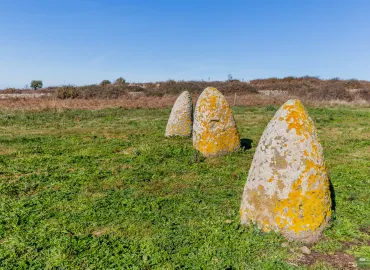
THE NECROPOLIS OF FILIGOSA
Filigosa is a prehistoric necropolis featuring four Domus de Janas, the famous “fairy houses” of Sardinian tradition. The tombs are carved into the rock and characterized by long access corridors known as dromos and a variable number of chambers where the bodies of the deceased were placed. The first chamber had a central hearth.
The site gave its name to the Filigosa culture of the 3rd millennium BC, the first to engage in metalworking in Sardinia.
How to get there: Coming from Bosa/Sassari, the site is located on the left side along S.P. 129 bis, near the Macomer hospital, approximately 1 km from the northern entrance to the city.
Opening hours: Open daily from 9:30 AM to 1:30 PM.

NURAGHE SANTA BARBARA
The Nuraghe Santa Barbara—named after the nearby rural church dedicated to the saint—is a complex-type nuraghe, consisting of a central tower standing 15 meters tall and a large quadrilobed bastion with a courtyard. Impressive in size and excellent in its state of preservation, it is one of the most renowned nuraghi on the island. It was built to control the natural routes of access between the North and South, East and West.
Coming from Cagliari, take the SS 131 and, at KM 145, you will find the monument’s rest area on the right (look for the signpost). If coming from Sassari/Bosa, it is preferable to enter Macomer, then take the SP129 in the direction of Nuoro, rejoining the SS 131 toward Sassari until KM 145, where the parking area for accessing the monument is located. From here, proceed on foot for about 10–15 minutes along a country path leading to the site.
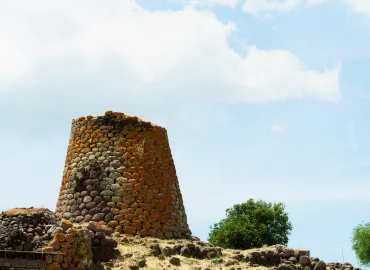
THE ETHNOGRAPHIC MUSEUM “LE ARTI ANTICHE”
The Ethnographic Museum “Le Arti Antiche” in Macomer, housed in an original 19th-century home, aims to recover and showcase the most characteristic aspects of the local traditional culture. The museum displays over three thousand original objects, arranged in 14 rooms and divided by “arts,” telling the story of ancient trades and crafts.
It takes visitors on a journey back in time, to an era when the passing of hours was marked by the rhythm of the seasons and the tasks tied to them. It allows visitors to rediscover aspects and features of our history and reclaim the ancient value of the simplest daily gestures—a heritage of culture, art, and folklore.
How to get there: From all directions, head to the main street of Macomer: Corso Umberto I n. 225.
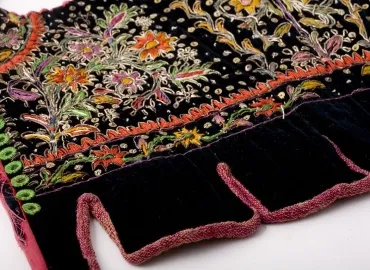
EXCURSION IN BARBAGIA: ORGOSOLO, NUORO, AND MAMOIADA
The excursion takes us into the heart of the Nuoro province to discover the most characteristic aspects of a territory where time seems to have stood still. We will visit Nuoro, with its beautiful museums, the capital of the province since 1926; Orgosolo, undoubtedly one of the most famous towns in the area, which has become a major tourist destination thanks to its unique murals—tangible and unique testimonies of Sardinian and beyond history—set against the spectacular backdrop of the Supramonte landscape. Equally worth a visit is the small village of Mamoiada, renowned for its picturesque carnival masks: the Mamuthones and the Issohadores.
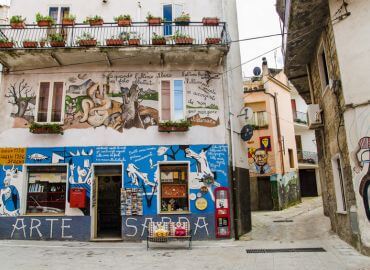
ROMANESQUE CHURCHES ITINERARY
A tour through Central Sardinia, exploring splendid churches built during a period full of charm and mystery. Favorable historical circumstances, starting shortly after the year 1000, contributed to the spread of new artistic trends in Sardinia, which merged with the local heritage. These trends left their most significant marks in ecclesiastical architecture, sometimes transforming existing structures, sometimes constructing new buildings that can still be visited today.
The itinerary includes a visit to the Cistercian Abbey of N.S. di Corte in Sindia, built in 1147 by Cistercian monks from Clairvaux (France). The tour continues to the archaeological complex of Santa Sabina, which features, in addition to the small Romanesque church—unique in Sardinia—built on the remains of a Nuragic village, a beautiful single-tower nuraghe. Our excursion concludes with a visit to the Church of San Lorenzo in Silanus. While no documentary evidence has been found regarding its construction date, its architectural features link it to the Cistercian craftsmen active in the Abbey of Santa Maria di Corte around the mid-12th century.
